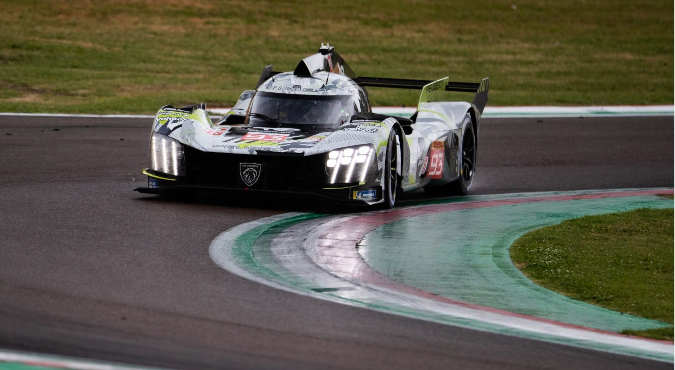Pista – FIS WEC – Peugeot Sport Aims for the Endurance Racing Finish Line with Simulation from Dassault Systèmes

Dassault Systèmes (Euronext Paris: FR0014003TT8, DSY.PA) and Peugeot Sport, the motorsports division of Stellantis, today announced their partnership to simulate and optimize the aerodynamics of the PEUGEOT 9X8 Hybrid Hypercar for the 2024 endurance racing season, and demonstrate high-performing electric mobility in motorsports that creates value for Stellantis’ automotive brands.
Dassault Systèmes’ SIMULIA PowerFLOW application, powered by the 3DEXPERIENCE platform, was used to create a virtual twin of the car’s entire exterior and accurately predict the aerodynamic effects of different designs on performance, downforce generation and stability. Through a seamless connection of its design and simulation data in the cloud, Peugeot Sport was able to evaluate and optimize design ideas. Therefore, final design decisions were reached more efficiently and cost-effectively.
“Dassault Systèmes and its technology and expertise are at the center of our design and simulation. This partnership enabled our team of 120 people to collaborate, innovate quickly, and fulfill our objectives,” said Olivier Jansonnie, Motorsport WEC Project Director, Stellantis. “From day one, we could easily access and understand the airflow simulation results and make the first decisions that steered the rest of our designs. We were able to achieve 80 to 90% of our development only with simulation.”
Peugeot Sport’s hybrid Hypercar will participate in the 2024 FIA World Endurance Championship (WEC) season, which consists of nine races globally including the high-profile 24 Hours of Le Mans. In the Hybrid Hypercar category, competitors must adhere to strict design regulations and test their vehicles in the same wind tunnel, underscoring the key role of aerodynamics in gaining a competitive edge.
Peugeot Sport was already using Dassault Systèmes’ CATIA applications for its mechanical design, and wanted to get its aerodynamics studies up and running quickly and carry out its testing in one virtual approach, before testing the physical car in the tunnel. More than 10,000 simulations were run using Dassault Systèmes’ solutions, evaluating how air would flow underneath the powertrain, around the front splitter, and along the rear without a wing, for example.
“Motorsports is demanding for drivers and their vehicles. It requires teams to have speed and precision,” said Laurence Montanari, Vice President, Transportation & Mobility Industry, Dassault Systèmes. “Dassault Systèmes has created an environment on the cloud for the engineers of our two companies to collaborate. They were able to simulate the aerodynamics of the 9X8 Hypercar through all its stages. Our experts analyzed the simulation results and proposed improvements to fulfill the requirements of WEC. Peugeot Sport succeeded in developing a competitive hypercar with high endurance.”








